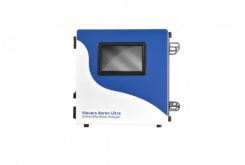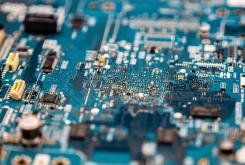What Manufacturers Need to Know About Regulatory Changes to Endotoxin Testing

Product safety is paramount in pharmaceutical and medical device manufacturing. Among the most critical safety measures is bacterial endotoxin testing (BET), which detects potentially dangerous contaminants that could cause severe reactions in patients. These endotoxins, which are components of bacterial cell walls, can trigger fevers and life-threatening conditions if they enter the bloodstream through contaminated medical products.
Every injectable medication, implantable medical device, and many other healthcare products must undergo rigorous endotoxin testing before reaching patients. For half a century, the industry has relied on a remarkable natural solution for detecting these contaminants: the blood of horseshoe crabs. This blood contains limulus amebocyte lysate (LAL), which has an extraordinary ability to detect even minute traces of bacterial endotoxins. The sensitivity and reliability of LAL testing have made it the gold standard in pharmaceutical quality control, protecting countless patients from harmful contamination.
Before LAL, manufacturers relied on rabbit pyrogen testing, which was less precise and raised significant ethical concerns. The discovery of LAL’s capabilities revolutionized the field, offering unprecedented sensitivity and reliability in detecting bacterial endotoxins. This breakthrough has protected patient safety for decades, setting the foundation for modern pharmaceutical quality control.
Now, a significant change is transforming the standards for how manufacturers can approach this vital testing. The U.S. Pharmacopeia (USP) Microbiology Expert Committee has approved Chapter <86>, Bacterial Endotoxins Test Using Recombinant Reagents, marking a new era in endotoxin testing. This change, which will be officially implemented in May 2025, opens the door for synthetic alternatives to achieve the same high standards of safety while addressing sustainability concerns about horseshoe crab populations.
This development marks a pivotal moment where advanced technology meets environmental responsibility, all while maintaining the rigorous safety standards that patients depend on. For manufacturers, it offers new opportunities to modernize their testing processes while contributing to conservation efforts and expanding their use of more sustainable methods and materials.
A move to synthetic alternatives
The quest for sustainable alternatives to LAL testing has led to two significant innovations over the past two decades: recombinant Factor C (rFC) and recombinant cascade reagents (rCR). Both methods eliminate the need for horseshoe crab blood while aiming to maintain the same high standards of endotoxin detection.
rFC was introduced about 20 years ago as the first synthetic alternative. It uses a cloned version of Factor C, the first enzyme in the horseshoe crab’s blood clotting mechanism. The newer rCR method takes this concept further by incorporating all the mechanisms involved in the blood clotting reaction which mimics the chromogenic method, compared to rFC’s single mechanism approach.
However, the widespread adoption of these synthetic alternatives has been limited by the requirement for extensive validation testing — a rigorous process that can take anywhere from six months to two years. While this validation requirement ensures safety and efficacy, it often deters companies from making the switch, with an estimated 95% of manufacturers continuing to use traditional LAL testing.
The approval of USP Chapter <86> is an important step in removing this barrier. By adding techniques that use synthetic reagents to the current compendial tests — meaning the use of recombinant reagents will be recognized as standard approaches — manufacturers can adopt these procedures as alternative methods. This change maintains the industry’s commitment to safety while significantly reducing the time and resources needed to implement sustainable testing methods.
For manufacturers, this means they can now choose between traditional LAL testing and synthetic alternatives based on their specific needs and sustainability goals rather than being deterred by the validation process. An evaluation showing the suitability of methods for specific products, such as testing for interferences, will be adequate. This approach harmonizes with guidelines outlined in <85>. This change aligns with growing industry initiatives to reduce dependence on animal-derived products while maintaining the highest standards of product safety.
Sievers’ analyzers are ready
As manufacturers prepare for USP Chapter <86>, technology solutions are evolving to meet both traditional and emerging needs. The Sievers Eclipse automated endotoxin detection platform exemplifies adaptability, supporting both conventional LAL testing and synthetic alternatives while significantly reducing reagent consumption.
The platform’s innovative design addresses the industry’s persistent challenges: the time-intensive and error prone nature of traditional testing methods. While conventional 96-well plate testing requires nearly an hour of setup time and manual pipetting, the Eclipse platform reduces this to less than 10 minutes through automation. The elevated efficiency comes from its advanced microfluidic system, which automates sample distribution and standard curves, requiring less than 30 pipetting steps compared to the traditional 200+.
Perhaps most significantly, the Eclipse platform achieves these improvements using 90% less reagent than traditional methods. This dramatic reduction applies whether using conventional LAL or synthetic alternatives, making it a valuable tool for manufacturers focused on both sustainability and efficiency.
Veolia maintains a dedicated Sievers team specializing in endotoxin testing applications. This team provides comprehensive support for implementation, method development, and ongoing testing needs, helping manufacturers optimize their processes regardless of which testing method they choose to employ. Reach out to the Sievers team to learn how our experts can support your endotoxin testing needs.







